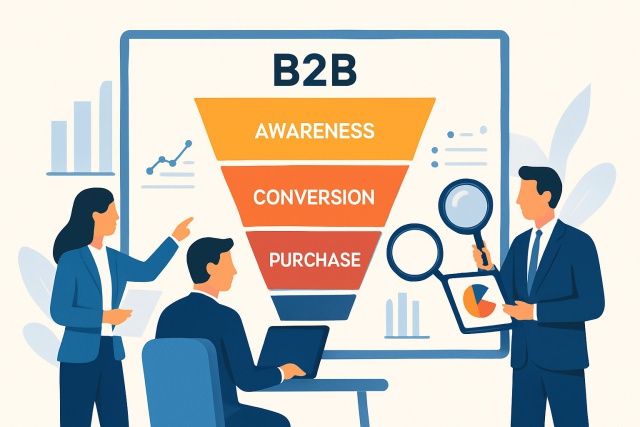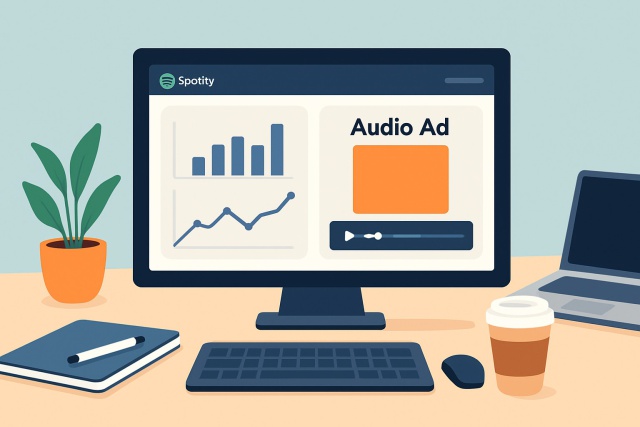What is Substack and How Does It Work for Writers?


Writers and content creators are spoiled for choice with an ever-growing arsenal of tools and platforms to showcase their work and connect with audiences. Substack has quietly taken center stage as a go-to for publishing newsletters and turning them into a steady income stream. This article breaks down what Substack is all about. It explains how it helps writers gather a loyal subscriber base, deliver content directly into readers’ inboxes, and generate revenue from paid newsletters—all without the headache of complicated tech.
So, what exactly does Substack do?
Substack is an online platform designed primarily for independent writers and content creators who want to cut through the noise and deliver newsletters and other written pieces straight to their audience. It takes the hassle out of creating, sharing and monetizing newsletters—no need for a fancy website or complicated tech know-how. Writers can build their email subscriber lists and offer a mix of free and paid content while managing payments all under one roof.
Substack was founded in 2017 by Chris Best, Hamish McKenzie and Jairaj Sethi. It didn’t take long before it became a go-to platform for writers who had enough of the traditional media grind and wanted a direct line to their readers. The real magic lies in its focus on fostering tight-knit connections and helping writers earn reliable income through subscriptions.
Substack tools for getting your words out there
Substack is an all-in-one toolkit where you can craft your newsletter content, send it to subscribers and manage paid memberships without breaking a sweat. Posts go directly to readers' inboxes or can be checked out on Substack’s site or app—whichever floats your boat. Subscriber lists often grow on their own.
Create a free Substack account—just enter your email and a few basic details. Easy as pie.
Set up your newsletter by choosing a name that truly stands out, a catchy URL, and a look that screams "you."
Dive into writing your first newsletter post with Substack’s handy editor, adding images and formatting to keep things lively.
Share your newsletter link far and wide on social media or blogs where your future subscribers might hang out.
When you’re ready, pick your pricing—free, paid, monthly, or yearly. It’s all in your hands with no pressure.
Manage subscriber payments and peek at detailed analytics from your dashboard, making it feel more like a fun project than work.
Substack gives writers the best of both worlds: you can put out free newsletters to reel in readers, while reserving the juiciest insights or stories just for those who pony up a subscription.
Options for monetizing and handling payments that actually work
Writers make money on Substack mainly by charging subscribers for access to premium newsletters. The platform puts you firmly in the driver's seat when it comes to setting your own prices and billing schedules, while quietly handling the behind-the-scenes secure payments through Stripe.
- Writers can mix and match multiple subscription levels whether monthly or yearly tailoring options to fit the unique tastes of their readers.
- Striking that sweet spot between free and paid content is key—it's a subtle dance that reels in fresh readers and nudges them to take that upgrade leap.
- Behind the scenes, Substack teams up with Stripe to ensure payments go through safely and smoothly.
- Refund policies are entirely up to the writer giving them the freedom to handle any customer hiccups in a way that feels right.
- Payouts come around like clockwork providing creators with a reliable and steady flow of income to keep the creative wheels turning.

Substack dashboard showing subscription statistics and revenue overview for a newsletter writer
Why Writers Find Substack Surprisingly Useful
Many writers find themselves naturally drawn to Substack because it’s straightforward and lets them connect directly with their readers without any fuss. Unlike the maze of traditional publishing or wrestling with a complicated website, Substack keeps things simple. It makes it a breeze to grow and keep your subscription list humming along.
- Setting up is a breeze and super quick so writers can dive into publishing without missing a beat.
- No need to be a tech wizard or know any coding to keep your platform humming smoothly.
- Get paid straight from your subscribers with no fuss—just simple transparent revenue sharing.
- Relish the freedom to write exactly how you want without anyone breathing down your neck editorially.
- Handy built-in analytics make it a snap to see how your subscribers are engaging and how your content is holding up.
- Community features let readers chime in with comments and replies sparking genuine conversations.
Possible Challenges and Things to Keep in Mind (because nothing worth doing is ever completely smooth)
Substack comes with a bunch of perks but writers should definitely keep a few caveats in mind. The platform fees can nibble away at your earnings and since it relies heavily on subscription revenue you’ll often find yourself wearing your marketing hat to keep things rolling. The design options are lean compared to fully owned sites. Building an audience can feel like chasing a moving target because discoverability isn’t always a walk in the park.
- Substack takes a 10% cut from subscription revenue, which might pinch a bit but is pretty standard in the biz.
- Payments are processed through Stripe, though that option isn’t available in every corner of the globe.
- Writers really have to roll up their sleeves and promote their work consistently to grow and maintain their subscriber base.
- The design and branding tools are straightforward—think simple rather than flashy—so don’t expect a ton of customization freedom.
- Building an audience usually moves at a snail’s pace unless you bring in some outside promotion to give it a proper boost.
Getting Started with Substack A Friendly, No-Nonsense Step-by-Step Guide
Starting out on Substack is straightforward once you get the hang of it. Just kick things off by setting up your account and playing around with how your newsletter looks and feels—make it yours. Next, decide if you want to share free content or go with paid subscriptions. You can also try a bit of both to keep things interesting. Then dive into writing your very first newsletter post to introduce yourself and give people a taste of what they can expect.
Kick things off by creating your Substack account with your email and quickly completing the verification step. It’s painless, I promise.
Make your newsletter truly yours by picking a catchy title, setting up the URL, writing a description that sings and giving it a look that fits your vibe.
Pick the subscription model that works best for you—free, paid or a handy mix of both, whatever floats your boat.
Pour your heart into your first newsletter, aiming to engage and inform your readers like you’re having a friendly chat.
Hit publish and then shout it from the rooftops through social media, blogs or podcasts to spread the word.
Keep the momentum going by regularly promoting your newsletter. Attracting new subscribers is a marathon, not a sprint.
Handy Tips for Writers Diving into Substack
Writers aiming to make it big on Substack usually stick to a steady publishing rhythm, blending both free and premium content to keep their readers coming back for more. Building a direct line to subscribers and genuinely welcoming their feedback is a surefire way to nurture a loyal fanbase. Tossing in a bit of social media savvy by sharing newsletters and customizing email messages can do wonders for growth and retention.
- Send newsletters consistently to help readers settle into a routine they can count on.
- Connect with subscribers by replying to comments and adding a personal touch to your messages—it goes a long way.
- Offer exclusive content or unique insights to paid subscribers to give them something special.
- Share your newsletter on platforms like Twitter or LinkedIn where your audience already spends time.
- Tailor your emails thoughtfully to create a stronger bond and encourage higher open rates.
- Keep a close eye on key metrics and tweak your content so it resonates better with what your audience wants.
"Substack puts writers firmly in the driver’s seat by cutting out the middlemen, giving creators the chance to build a direct, lasting connection with their readers—no detours involved." – Industry Expert
Comparing Substack with Other Publishing Platforms The Good the Quirky and the Straightforward
Substack carves out its own niche compared to platforms like Medium, Patreon and typical blogs by laser-focusing on newsletter distribution with built-in monetization. Medium offers a content platform but less hands-on control over your subscribers. Patreon leans heavily into crowdfunding territory.
| Platform | Primary Use Case | Monetization Options | Ease of Use | Customization | Audience Reach |
|---|---|---|---|---|---|
| Substack | Publishing newsletters | Paid subscription models | Very simple | Basic branding features | Targeted email subscriber list |
| Medium | General blogging | Earnings through Partner Program | Pretty straightforward | Moderate design flexibility | Large built-in community |
| Patreon | Crowdfunding for creators | Membership levels and donations | A bit of a learning curve | Extensive (with pages and tiers) | A mix of platform community and loyal outside followers |
| Traditional Blog | Website content and personal branding | Advertising, affiliate links, sponsorships | Can range from moderate to advanced | Fully customizable | Audience size depends largely on SEO and marketing efforts, so your mileage may vary |
Writers who truly make the most of Substack tend to zero in on building a loyal and engaged core audience through email newsletters. Journalists, essayists, niche experts and independent commentators know their crowd. The platform shines for anyone looking for an easy no-fuss way to earn money without getting tangled up in tricky tech stuff.
Conclusion Figuring Out If Substack Truly Fits Your Needs as a Writer
Substack offers a straightforward path for newsletter writers who want to own their audience and keep their options open for earning money. If you want to build a direct connection with your readers and create a reliable income, it’s worth a closer look. It is smart to watch platform fees and factor in the marketing hustle and how much customization you want.
Frequently Asked Questions
How much does Substack take from my earnings?
Substack takes a 10% cut of your subscription revenue excluding payment processing fees, which Stripe handles. If you bring in $100 from paid subscriptions, Substack pockets $10 and you get $90 minus whatever Stripe charges for the transaction. It’s pretty straightforward — just something to keep in mind when you’re tallying up your take-home.
Can I offer both free and paid content on Substack?
Absolutely. Substack lets you mix free and paid posts. Many individuals share some free content to reel readers in then save the exclusive or premium pieces for paying subscribers. It’s a neat way to grow your audience while rewarding those who stick around and support your work.
Do I need a website to use Substack?
Nope, not at all. Substack hosts your newsletter on its own customizable URL like yourname.substack.com. You can publish, manage subscribers, and get paid without setting up or maintaining a separate website. Honestly, it takes a lot of the usual tech headache out of the picture.
How do I get paid on Substack?
Substack uses Stripe to handle payments and sends your earnings straight to your linked bank account on a regular schedule — weekly, monthly, or however it’s set up. Just a heads-up: Stripe isn’t everywhere yet so it’s worth checking if your country is on the list before you dive in.
Is Substack good for beginners with no audience?
Yes but fair warning building an audience takes some elbow grease. Substack offers tools to get you started from zero but success usually comes from publishing regularly, promoting your work on places like social media and keeping those readers coming back for more. Tons of creators start small and grow their following over time — it’s a marathon not a sprint.
Can I migrate my existing newsletter to Substack?
Definitely. You can import your current email list as long as your subscribers have given the okay. You can also redirect your existing readers to your new Substack URL and keep full control over your content and subscriber data. It’s a smooth way to make the switch without losing touch with your audience.




